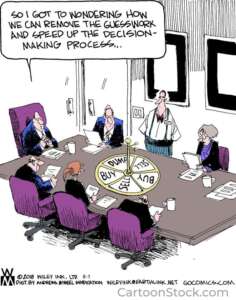The Power of Choice
On building resilient portfolios, one deliberate decision at a time.
Investors today have more tools, platforms, and asset classes at their fingertips than ever before, and rightly so. You deserve access. You deserve options. The ability to diversify thoughtfully to allocate capital across public and private markets is no longer a luxury. It is an expectation.
But real power does not come from having every option. It comes from knowing which ones matter and which to leave alone.
At Garrington, we think about that distinction every day. Just as our investors choose where to allocate their capital, we select every loan that enters our portfolio.
The performance comes from the process. The process starts with choice.
Choice Isn’t Just a Privilege. It’s a Skill
Every allocator must navigate the noise, especially in a market as fast-moving and capital-rich as private credit.
But the same challenge applies to us as lenders. We are not handed a portfolio. We build it from scratch, one deal at a time.
Some opportunities look great on paper but crumble under real scrutiny. Others are quietly durable. The art is knowing the difference.
Choice Reveals Discipline
In our world, deals are not scarce. Good ones are.
Every day, capital is looking for a home, and opportunities flood the market with urgency and polish. But not everything that is available is right. And not everything that is right is right for us. The challenge is not abundance. It is alignment.
We are not in the business of collecting deals. We are in the business of constructing a portfolio.
That means turning down opportunities that others might chase because they do not align with our structure, standards, or sense of timing.
Discipline is not just about what you avoid. It is about what you build as a result.

At Garrington, we prefer precision over roulette.
Behind the No
One of the most important things we do as lenders is walk away from deals that do not fit. Not because they are bad businesses but because the structure does not align with our credit philosophy.
Example 1: Recently, we reviewed a financing request associated with a real estate acquisition. On the surface, the numbers seemed viable. But when we dug in, several things gave us pause. The timeline did not add up. Key working capital assets were already heavily leveraged. The projected loan need was significantly higher than what our structure could support. The borrower was hoping to fund a long-term asset by leveraging short-term assets. That is a decision we have seen lead to trouble more often than not.
Example 2: A specialty distributor approached us with a request for a large facility based on growing revenue and forward-looking projections. However, while their sales pipeline was impressive, their receivables were aging and heavily concentrated in just two customers. We knew that if either account delayed payment, the entire cash flow model would collapse. We passed. A few months later, one of those accounts filed for creditor protection. Had we deployed, recovery would have been messy.
That is not a failure of opportunity. It is the outcome of discipline
Example 3: In another case, we examined a manufacturing business with strong EBITDA and a notable equity sponsor. But a closer look revealed that their key asset—a large equipment fleet—was almost fully encumbered through lease financing. On paper, it appeared asset-rich. In practice, there was very little left to secure our position. We declined.
These are not isolated decisions. They are patterns. The longer you do this work, the more you recognize red flags others dismiss: mismatched maturities, overly optimistic assumptions, and reliance on liquidity events that may never arrive. Saying no becomes second nature, not because you fear risk but because you understand it.
The best portfolios are built not just from what you fund but from what you decline. What matters is clarity, consistency, and a long view.
Pulling Back the Curtain
Discipline is not something we talk about lightly. It shapes how we operate. Every deal we consider is reviewed not just for what it offers today but also for how it will perform under pressure. We ask questions that do not always have perfect answers. What does this business look like when conditions tighten? Are the assumptions overly optimistic? Can the management team adjust to volatility?
Sometimes, the data confirms the story. Sometimes it does not. And in those cases, we make our decision with complete confidence in saying no.
The choice to pass on a deal often reflects just as much work as the choice to fund one. It is not about being conservative. It is about being consistent.
When we say a portfolio is constructed, not collected, this is what we mean.
The Investor Parallel
Our investors face the same landscape we do. Too much capital chasing too few great opportunities. It is tempting to act quickly, to follow others, or to trust the packaging.
However, the most successful allocators are those who make choices deliberately rather than reactively. Who knows when to lean in and when to stay patient?
In that sense, we are not just lenders. We are fellow decision-makers. We do not take that lightly.
Why We Write These
We started this blog series with a simple goal. To give our investors, prospects, and peers a clearer view of how we think. We are not a household name, and that is okay. We are a boutique private credit firm, and we take pride in that.
But we also believe trust is earned over time, not assumed.
Whether we have met on the road, spoken over Zoom, or have yet to connect, we want these posts to serve as a window into how we operate, how we make decisions, how we view risk, and how we strive to build something that lasts.
Final Thought
In an age of access, what matters is not how many doors you can open. It is which ones you choose to walk through and why.
That is the real power of choice. Not breadth, but focus. Not activity, but intention.




April Fund Commentary